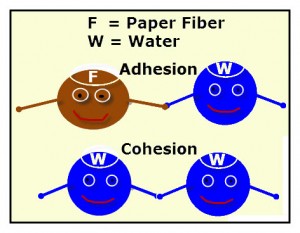Chloroplasts are organelles found in plant cells . As well as conducting photosynthesis, they carry out almost all fatty acid synthesis in plants, and are involved in a plant's immune response. A chloroplast is a type of plastid which specializes in photosynthesis. During photosynthesis, chloroplasts capture the sun's light energy, and store it in the energy storage molecules ATP and NADPH while freeing oxygen from water. They then use the ATP and NADPH to make organic molecules from carbon dioxide in a process known as the Calvin cycle.
The word
chloroplast is derived from the Greek words
chloros, which means green, and
plastes , which means "the one who forms"
Types Of Choroplast
Chlorophyll a is a specific form of chlorophyll used in oxygenic photosynthesis. It absorbs most energy from wavelengths of violet-blue and orange-red light. This photosynthetic pigment is essential for photosynthesis in eukaryotes, cyanobacteria and prochlorophytes because of its role as primary electron donor in the electron transport chain.
Chlorophyll
a also transfers resonance energy in the antenna complex, ending in the reaction center where specific chlorophylls P680 and P700 are located.
Chlorophyll b is a form of chlorophyll. Chlorophyll
b helps in photosynthesis by absorbing light energy. It is more soluble than chlorophyll
a in polar solvents because of its carbonyl group. Its color is yellow, and it primarily absorbs blue light.
In land plants, the light harvesting antennae around photosystem II
contain the majority of chlorophyll b. Hence, in 'shade adapted
chloroplasts', which have an increased ratio of Photosystem II to Photosystem I,
there is a lower ratio of chlorophyll a to chlorophyll b (Kitajima and
Hogan 2003). This is adaptive as increasing chlorophyll b increases the
range of wavelengths absorbed by the shade chloroplasts.
Xanthophylls (originally
phylloxanthins) are yellow pigments that form one of two major divisions of the carotenoid group. The name is from Greek
xanthos (
"yellow")
+ phyllon (
"leaf") due to their formation of the yellow band seen in early chromatography of leaf pigments. Their molecular structure is similar to carotenes, which form the other major carotenoid group division, but xanthophylls contain oxygen atoms, while
carotenes are purely hydrocarbons with no oxygen. Xanthophylls contain their oxygen either as hydroxyl groups and/or as pairs of hydrogen atoms that are substituted by oxygen atoms acting as a bridge (epoxide). For this reason, they are more polar than the purely hydrocarbon carotenes, and it is this difference that allows their separations from carotenes in many types of chromatography. Typically, carotenes are more orange in color than xanthophylls.
Carotenes contribute to photosynthesis by transmitting the light energy they absorb from chlorophyll. They also protect plant tissues by helping to absorb the energy from singlet oxygen, an excited form of the oxygen molecule O
2 which is formed during photosynthesis. Chemically, carotenes are polyunsaturated hydrocarbons
containing 40 carbon atoms per molecule, variable numbers of hydrogen
atoms, and no other elements. Some carotenes are terminated by
hydrocarbon rings, on one or both ends of the molecule. All are coloured
to the human eye, due to extensive systems of conjugated double bonds. Structurally carotenes are tetraterpenes, meaning that they are synthesized biochemically from four 10-carbon terpene units, which in turn are formed from eight 5-carbon isoprene units.
.






































